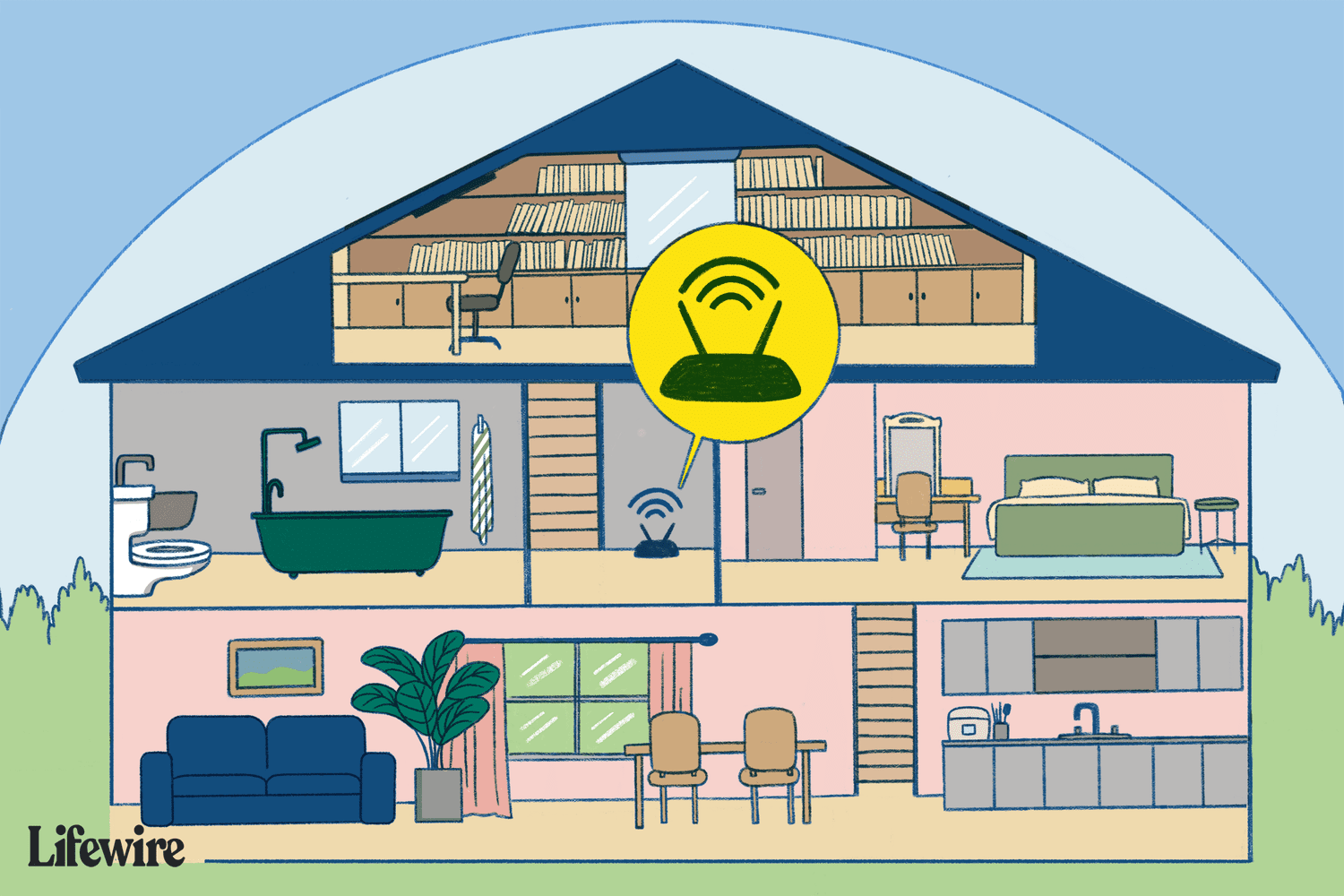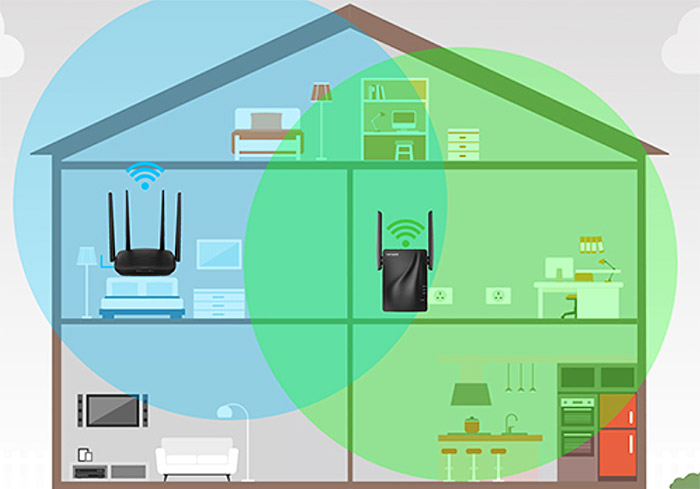What Is The Range Of A Router?
A router is a networking device used to connect multiple computers, phones, tablets, and other devices on a local network and/or the internet. The range of a router is the maximum distance a router can transmit its signal to a device and still be able to communicate with it. The range of a router can vary greatly depending on the type of router, its signal strength, and the environment it is in. The range of a router can range from a few feet to several miles.
Definition of a Router
A router is a device that forwards data packets between computer networks. It is an essential component of most modern networks, connecting multiple devices and allowing traffic to travel between them. Routers can be wired or wireless, and their range is determined by the type of network technology in use. Wired routers typically connect devices using cables or fiber optic lines, and can support up to 100 meters of distance. Wireless routers, on the other hand, use radio frequency waves to connect devices and can reach up to several kilometers, depending on the type of technology. Routers can also be configured to provide additional features such as traffic shaping, network address translation, and quality of service.
Working Principle of a Router
A router is a device that acts as a gateway between two networks, allowing connectivity between them. It is an important part of any network, allowing users to access the internet, as well as share files and resources. In order to understand how a router works, it is important to understand its range.
A router’s range is determined by its maximum transmission range, which is the farthest distance that it can send and receive data. This range is limited by the power of the router’s signal, as well as any physical obstructions in the area. The type of router can also affect its range, as some are designed to cover larger distances than others.
When a router is placed in its optimal position, it can cover a large area, depending on the environment and the power of the router’s signal. The range of a router also depends on the type of wireless standard it is using. For example, a router using the 802.11ac standard will have a much greater range than one using the 802.11b standard.
In order to maximize the range of a router, it is important to place it in a central location with minimal obstructions. Additionally, users should make sure that the router is running the latest firmware, and that the antennas are properly positioned. By taking these steps, users can ensure that their router is operating at its maximum range.
Types of Routers
Routers are used to connect devices to the internet, enabling them to communicate with each other and access the worldwide web. A router’s range is the area it can cover, and this range depends on the type of router being used. There are three main types of routers: Wi-Fi, LTE, and mesh.
Wi-Fi routers use radio signals to send and receive data, and their range can vary depending on the strength of the router’s signal. Generally, Wi-Fi routers can cover a range of up to 150 feet indoors, and up to 300 feet outdoors.
LTE routers use cellular network technology to connect devices to the internet. They provide a greater range than Wi-Fi routers, and are usually used in rural areas or places where there is no access to Wi-Fi. LTE routers have a range of up to 1,000 feet, but this can vary depending on the signal strength.
Mesh routers are a type of Wi-Fi router that use multiple access points to create a single network. This type of router provides a much larger range than standard Wi-Fi routers, typically up to 5,000 square feet. Mesh routers also provide a more reliable connection than single access point routers.
Each type of router has its own range, and it is important to choose the right one for your needs. Wi-Fi routers are the most common type of router, and they are suitable for most home and small business uses. LTE routers are best for rural areas, while mesh routers provide the best range for larger homes and businesses.

Advantages of a Router
A router provides a vital link between multiple networks, allowing data to pass between them. It is an integral component of any home or business network, allowing users to connect a wide range of devices, such as computers, tablets, and phones, to the internet. The range of a router is determined by a number of factors, including its signal strength, the type of antenna used, and the presence of obstacles. While routers often have a range of up to 300 feet, it is possible to increase this range significantly by installing a more powerful antenna and eliminating any obstacles that may be blocking the signal.
In addition to providing a reliable connection, a router also offers a number of advantages. It acts as a firewall, protecting your network from malicious attacks. It also provides access control, allowing you to limit which users can access your network. Routers also offer advanced features, such as Quality of Service (QoS) or Virtual Private Network (VPN) support, that can help to optimize your network’s performance. Furthermore, many routers now offer cloud-based features, allowing you to manage your network from anywhere.
Overall, a router provides an essential link between multiple networks and devices, allowing users to access the internet and take advantage of its various features. The range of a router is determined by a number of factors, and can be increased through the use of more powerful antennas and the elimination of obstacles. Additionally, routers offer a number of advantages, including firewall protection, access control, and advanced features.
Disadvantages of a Router
A router is considered an important component of a home or office network as it enables the connection of multiple devices to a single network. While routers are widely used for their convenience and features, there are certain drawbacks associated with them. One of the main disadvantages of a router is its limited range. Most routers have a maximum range of around 150 feet, which can be further reduced by obstacles such as walls and furniture. This means that the router’s signal will not reach far corners of a house and users may face difficulty in connecting to the network. Additionally, the range of a router is affected by the type of antenna, frequency used, and the type of environment the router is in. Thus, for larger homes, it may be necessary to have multiple routers to ensure that the signal can reach every corner of the house.
Another disadvantage of a router is its limited bandwidth. Routers are not capable of providing unlimited bandwidth to all devices connected to the network; instead, they are designed to provide equal bandwidth to all connected devices. This can be an issue for users who require high-speed internet access for streaming or gaming, as the speed may be reduced due to the limited bandwidth. Additionally, routers are also vulnerable to cyber-attacks, as they are often connected to the internet and can be easily compromised by hackers. Thus, it is important to ensure that routers have the latest security updates and are regularly monitored.
Factors Affecting the Range of a Router
The range of a router is often the deciding factor when it comes to choosing a wireless network for a home or office. While the range of a router is dependent on several factors, the most important factors are the type of router, signal strength, and the environment in which the router is located.
When selecting a router, it is important to consider the type of router you are looking for. Some routers are designed for long-range connections, while others are meant for shorter distances. The higher the frequency of the router, the greater the range of the router. For example, a router with a frequency of 2.4 GHz will have a greater range than a router with a frequency of 5 GHz.
It is also important to consider the signal strength of a router. Routers with a higher signal strength will have a greater range than those with a weaker signal. Additionally, the environment in which the router is located can affect the range of the router. For example, a router located in an area with a lot of interference, such as a crowded city, will have a shorter range than one located in an isolated environment.
When choosing a router, it is important to consider all of these factors in order to determine the best router for your needs. Knowing the range of a router can help you make an informed decision and ensure that you get the most out of your wireless network.
FAQs About the What Is The Range Of A Router?
1. What is the maximum range of a router?
The maximum range of a router will vary depending on the model and manufacturer, but most routers are capable of providing up to 300 feet of Wi-Fi coverage.
2. Does the range of a router depend on the environment?
Yes, the range of a router can be affected by environmental factors such as walls, furniture, and other electronic devices.
3. Can I boost the range of my router?
Yes, you can boost the range of your router by using a Wi-Fi range extender or access point. These devices can be used to expand the coverage area of your router.
Conclusion
The range of a router is determined by the power of the router’s signal, the type of antenna being used, and the environment where the router is located. Depending on these factors, the range of a router can vary widely, from a few feet to many miles. With the right setup, a router can cover an entire house, office building, or even an entire city.




